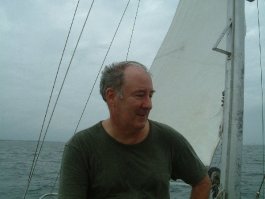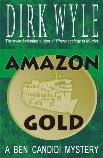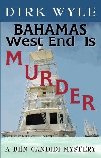
 |
|

 Was your face brushed by hanging, brown "mono-filament" lines? They are air roots from the ficus banyan trees towering above. A turn-of-the-century import to South Florida from India, the ficus banyan trees quickly made themselves at home. Vine-like, they grow up the sides of indigenous trees as "strangler figs," gaining height, then extending lateral limbs with hanging air roots that take hold and turn into a tree trunk.
Was your face brushed by hanging, brown "mono-filament" lines? They are air roots from the ficus banyan trees towering above. A turn-of-the-century import to South Florida from India, the ficus banyan trees quickly made themselves at home. Vine-like, they grow up the sides of indigenous trees as "strangler figs," gaining height, then extending lateral limbs with hanging air roots that take hold and turn into a tree trunk.
 We turn in for a closer look. Spanish mission style facade and bell-tower, and its charming courtyards make this a much-sought church for weddings, as well as for prayer and quiet devotional thought. Exploring the church grounds to the north, we come across a bronze plaque marking the site of the "Cocoanut Grove Public Utilities Company" (telephone and water) established in 1916 by William Matheson.
We turn in for a closer look. Spanish mission style facade and bell-tower, and its charming courtyards make this a much-sought church for weddings, as well as for prayer and quiet devotional thought. Exploring the church grounds to the north, we come across a bronze plaque marking the site of the "Cocoanut Grove Public Utilities Company" (telephone and water) established in 1916 by William Matheson.
 It spans the Coral Gables Waterway which was cut and blasted from the coral rock in the early 1900s. To the east, the Waterway connects with Biscayne Bay. To the west it continues towards the Everglades, providing one mile of backyard dockage for ocean-capable motor yachts and many miles of Venice-like residential environment -- and winter refuge for manatees, especially during a cold snap.
It spans the Coral Gables Waterway which was cut and blasted from the coral rock in the early 1900s. To the east, the Waterway connects with Biscayne Bay. To the west it continues towards the Everglades, providing one mile of backyard dockage for ocean-capable motor yachts and many miles of Venice-like residential environment -- and winter refuge for manatees, especially during a cold snap.

 At the Convention Center (27th Ave.), we veer to the right and skirt the marina with its docked shrimp boats and sailboats. Across the anchorage is an Australian pine inhabited "spoil island," created from "spoil" dredged when they dug the channels.
At the Convention Center (27th Ave.), we veer to the right and skirt the marina with its docked shrimp boats and sailboats. Across the anchorage is an Australian pine inhabited "spoil island," created from "spoil" dredged when they dug the channels.
 |
 |
 |
 |
 |